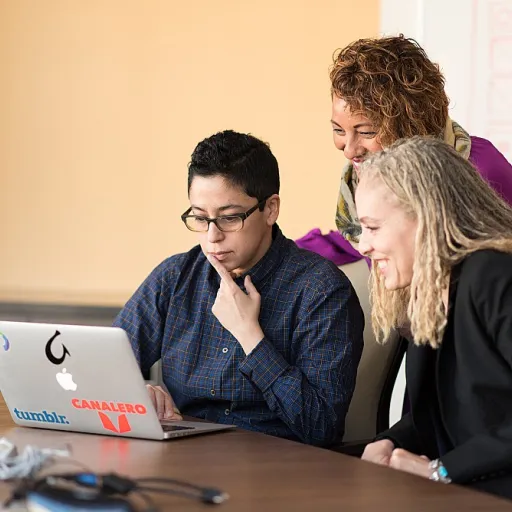
Defining 'At Large' Members
Clarifying the Concept of 'At Large' Board Members
Understanding the role of 'At Large' board members is crucial for effective governance in any organization. Unlike specific roles such as President, Secretary, or Director, 'At Large' members do not represent a particular section or interest group within the organization. Instead, these members contribute a broad perspective to the board's decision-making processes. In a typical board setting, 'At Large' members play a flexible role that can be tailored to the organization's evolving needs. They have the same voting rights as other board members, enabling them to participate fully in board meetings and committees. Their involvement often requires them to attend board and HOA meetings, ensuring they stay informed and active in board governance activities. Additionally, 'At Large' members can serve as representatives of the organization's broader constituency, reflecting interests that might not be specific to any single department or demographic. This unique positioning allows them to provide insights that foster balanced discussions during meetings. For more insights on the varied roles of board members, you might find this exploration of board inquiry roles insightful. This understanding forms the foundation that supports the effective integration of 'At Large' members into board governance, which can redefine the organization's strategic outcomes.Responsibilities of 'At Large' Members
Key Responsibilities of 'At Large' Members
In the realm of board governance, 'At Large' members play a crucial role in ensuring the effective functioning of an organization. These members, often referred to as directors at large, have a unique position that allows them to contribute to the board's overall objectives without being tied to a specific constituency or region. This flexibility enables them to focus on the broader interests of the organization, providing a balanced perspective during board meetings.
One of the primary responsibilities of 'At Large' members is to attend board meetings regularly. Their presence is vital for maintaining quorum and ensuring that the board's decisions reflect a diverse range of viewpoints. During these meetings, they engage in discussions, provide insights, and participate in voting, thereby influencing the direction of the organization.
Moreover, 'At Large' members often serve on various committees within the board. These committees, such as finance, governance, or strategic planning, benefit from the members' expertise and impartiality. By contributing to these committees, 'At Large' members help shape policies and strategies that align with the organization's mission and goals.
In addition to their committee work, 'At Large' members act as representatives of the board in various external engagements. They may liaise with stakeholders, attend industry conferences, or participate in community events, thereby enhancing the organization's visibility and reputation.
Another significant responsibility is to provide oversight and guidance to the board's management team. 'At Large' members work closely with the president, vice president, and other board directors to ensure that the organization's operations align with its strategic objectives. This oversight is crucial for maintaining accountability and transparency within the organization.
For a deeper understanding of how these responsibilities align with the broader governance framework, you can explore the role of an emeritus board member in UK companies.
Benefits of Having 'At Large' Members
Enriching the Board's Functionality
In any organization, the addition of 'At Large' Members to a board can significantly enhance its functionality and adaptability. These members contribute a fresh perspective and provide versatility in board governance, which is essential for the balanced decision-making processes. Understandably, with the inclusion of 'At Large' Members, an organization enhances its ability to effectively tackle issues due to the wide range of experiences and skill sets these members bring. Moreover, 'At Large' Members are not confined to specific roles, which means they can offer support and guidance across various board committees. Their freedom to lend assistance to diverse sectors of board management can bolster the oversight capabilities of the board. For instance, 'At Large' Members may provide insights during board meetings, ensuring that key issues are addressed comprehensively. This holistic approach can improve the efficacy of both board members and the organization as a whole. By attending board meetings and having voting rights, these members can participate actively in the electoral processes, which is important for maintaining a dynamic board governance structure. The presence of 'At Large' Members can also facilitate an impartial atmosphere during decision-making, as they are often seen as mediators distinct from conventional roles such as director or president. Furthermore, in scenarios like an election where the board may need to vote on specific matters, 'At Large' Members can serve as representatives of the broader community, voicing diverse perspectives that might otherwise be unrepresented. This is particularly valuable in community-based organizations such as an HOA board, where inclusion of diverse views is crucial. In conclusion, 'At Large' Members provide invaluable contributions to board dynamics by injecting agility, fostering inclusivity, and facilitating effective board governance, which is vital for any organization's success. For more insights on enhancing organizational roles, you might want to explore the impact of innovative systems in different countries.Challenges Faced by 'At Large' Members
Complexities Encountered by Diverse Representatives
The role of 'At Large' members can present several challenges, especially when it comes to balancing their responsibilities within the organization. As these members are expected to represent broader perspectives without a specific constituency, they are often tasked with navigating a complex landscape of diverse opinions and objectives. This uniqueness in their role can sometimes lead to ambiguity in their responsibilities compared to other board members or directors who have clearly defined roles. Moreover, the dynamics of board meetings can become intricate as 'At Large' members strive to integrate into existing governance structures. They're required to engage in board management activities, attend board meetings and contribute meaningfully to committees. This includes working alongside other roles such as the president, vice president, and secretary, which might pose coordination challenges. Ensuring their voice is heard, while not overshadowing specific representatives, is a fine line they must walk. In some organizations, particularly within different locales like Florida, 'At Large' members might have different voting rights or be elected through various processes, adding a layer of complexity to their participation in decision-making. Additionally, engaging effectively within the hierarchy and contributing to the overall board governance can be a challenge if their role isn't clearly defined or understood by the existing board members. Furthermore, 'At Large' members within an HOA board might face unique challenges if their responsibilities overlap with larger members' roles. This situation can demand a significant understanding of not only what does the board need but also how to manage relationships adeptly to maintain a harmonious board dynamic. As the large HOA scenarios unfold, the use of management software might become necessary to aid in efficient board management. Ultimately, a clear understanding and communication of their role within the board directors is crucial in overcoming these challenges and enhancing their contribution to the organization.How 'At Large' Members Are Selected
Selection Process for Effective 'At Large' Members
In many organizations, identifying the right candidate to serve as an 'At Large' member on the board is crucial for ensuring dynamic and effective governance. The selection process can vary, but it often aligns with the organization’s specific needs and goals. Typically, 'At Large' members are selected through an election process, similar to other board members. This approach underscores the democratic ethos within organizations, reflecting the value they place on fair representation. The election often involves members casting votes during board meetings or Annual General Meetings (AGM). By allowing the wider membership to vote, organizations can ensure that 'At Large' members possess the judgement and skills necessary to complement the existing board structure. Depending on the organization's structure, a nominations committee may oversee the selection process. This committee evaluates potential candidates by considering factors such as previous experience, skills relevant to board governance, and their alignment with the organization’s mission. The committee's efforts aim to ensure that 'At Large' members effectively contribute to board management and fulfill the necessary roles and responsibilities. In some instances, an organization's bylaws may dictate specific criteria or qualifications needed for someone to be eligible as an 'At Large' member. These criteria can include having former experience as a director, qualifications in the specific industry, or other role-specific expertise that can benefit board management. Furthermore, organizations often rely on management software to streamline the selection process. These tools can facilitate the scheduling of meetings and elections, enhancing efficiency and transparency. Ultimately, the meticulous selection of 'At Large' members helps in refreshing the board dynamics, ensuring the members large impact the organization positively.Impact of 'At Large' Members on Board Dynamics
Influence on Board Dynamics
The presence of 'At Large' members on a board can significantly influence the dynamics within the organization. These members, often elected for their broad perspective and lack of specific constituency ties, bring a unique viewpoint to board governance. Their role is not confined to representing a particular group, which allows them to focus on the overall health and strategic direction of the organization.
In board meetings, 'At Large' members often act as neutral parties, facilitating balanced discussions and helping to mediate conflicts. Their voting rights are crucial in decision-making processes, as they can sway outcomes by considering the broader implications of board decisions. This can be particularly important in HOA boards, where decisions impact a diverse community.
Moreover, 'At Large' members contribute to committees and play a vital role in board management by ensuring that all voices are heard. Their involvement can lead to more comprehensive and inclusive decision-making, enhancing the effectiveness of board meetings. This is especially true in larger organizations where board directors must navigate complex governance structures.
However, the impact of 'At Large' members is not without challenges. As discussed earlier, they must balance their broad responsibilities with the need to remain informed about specific issues facing the organization. This requires a commitment to ongoing education and engagement with both management and other board members.
Overall, 'At Large' members serve as a stabilizing force within the board, promoting a holistic approach to governance that benefits the entire organization. Their role is essential in ensuring that the board remains focused on its strategic objectives while addressing the needs of all stakeholders.


-large-teaser.webp)










